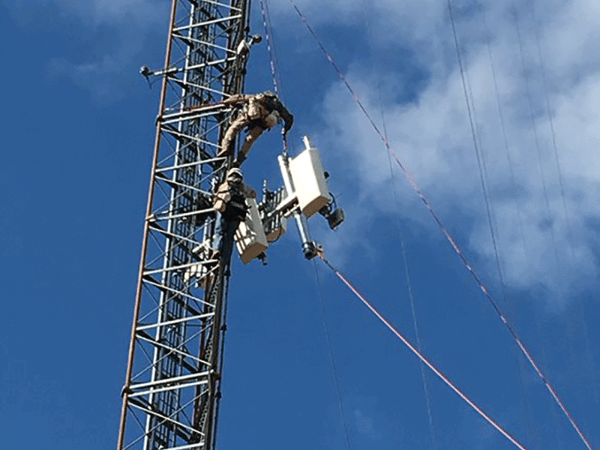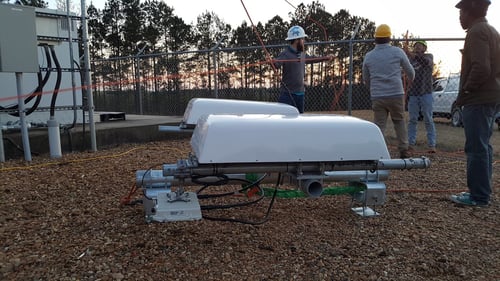 The C Spire Rural Broadband Consortium is studying different methods to deliver internet to rural communities. One of the many rural communities we are testing in is Maben, Mississippi, a town with a population of less than 900 people. There we are testing TV White Space (TVWS).
The C Spire Rural Broadband Consortium is studying different methods to deliver internet to rural communities. One of the many rural communities we are testing in is Maben, Mississippi, a town with a population of less than 900 people. There we are testing TV White Space (TVWS).
What is TVWS?
TVWS is tv channels that are otherwise unused by tv stations and other operators with frequencies (spectrum) typically transmitted around 600 MHz. In rural areas, relatively few channels are used for broadcast TV, leaving a number of TVWS channels available for Internet Service Providers (ISPs) to use. In addition, due to the excellent characteristics of this spectrum (multi-mile range and the ability to penetrate trees and walls), this wireless option appears to be a promising way to provide broadband access to people in sparse, rural areas. Because of this, the C Spire Rural Broadband Consortium team has begun to evaluate the viability and effectiveness of TVWS in Mississippi’s rural markets including Maben, Mississippi.
Analysis of channel availability
 Using TVWS requires accessing a TVWS database certified by the Federal Communications Commission (FCC) that indicates which TV channels are available to use at the location. The examination (spectrum scans using a spectrum analyzer) includes checking to see if the spectrum in an area is highly used (noisy). Just as it’s difficult to hear someone speaking to you in a loud, crowded room, TVWS communication can become difficult if other operators in the area are broadcasting on the same frequencies. Our spectrum scans show that the TV spectrum at our rural test sites is more congested than the TVWS database indicates.
Using TVWS requires accessing a TVWS database certified by the Federal Communications Commission (FCC) that indicates which TV channels are available to use at the location. The examination (spectrum scans using a spectrum analyzer) includes checking to see if the spectrum in an area is highly used (noisy). Just as it’s difficult to hear someone speaking to you in a loud, crowded room, TVWS communication can become difficult if other operators in the area are broadcasting on the same frequencies. Our spectrum scans show that the TV spectrum at our rural test sites is more congested than the TVWS database indicates.
The results
The testing in Maben demonstrated the difficulties in utilizing limited clean TVWS channels, as the increased noise degrades broadband data speeds and range. Both the spectrum scans and internet testing indicate challenges in finding enough unused channels to deliver broadband internet at any significant distance from a TVWS base station at the locations tested.
Next steps
While our initial TVWS testing revealed challenges in identifying available TVWS channels in several rural areas, the Consortium will continue to evaluate the opportunity for TVWS to provide longer range and penetrable connectivity in rural areas as a complement to different more limited fixed wireless broadband technologies. Stay tuned for more test results.
CLICK HERE to learn more about the C Spire Rural Broadband Consortium's efforts to bring broadband to rural communities.

















